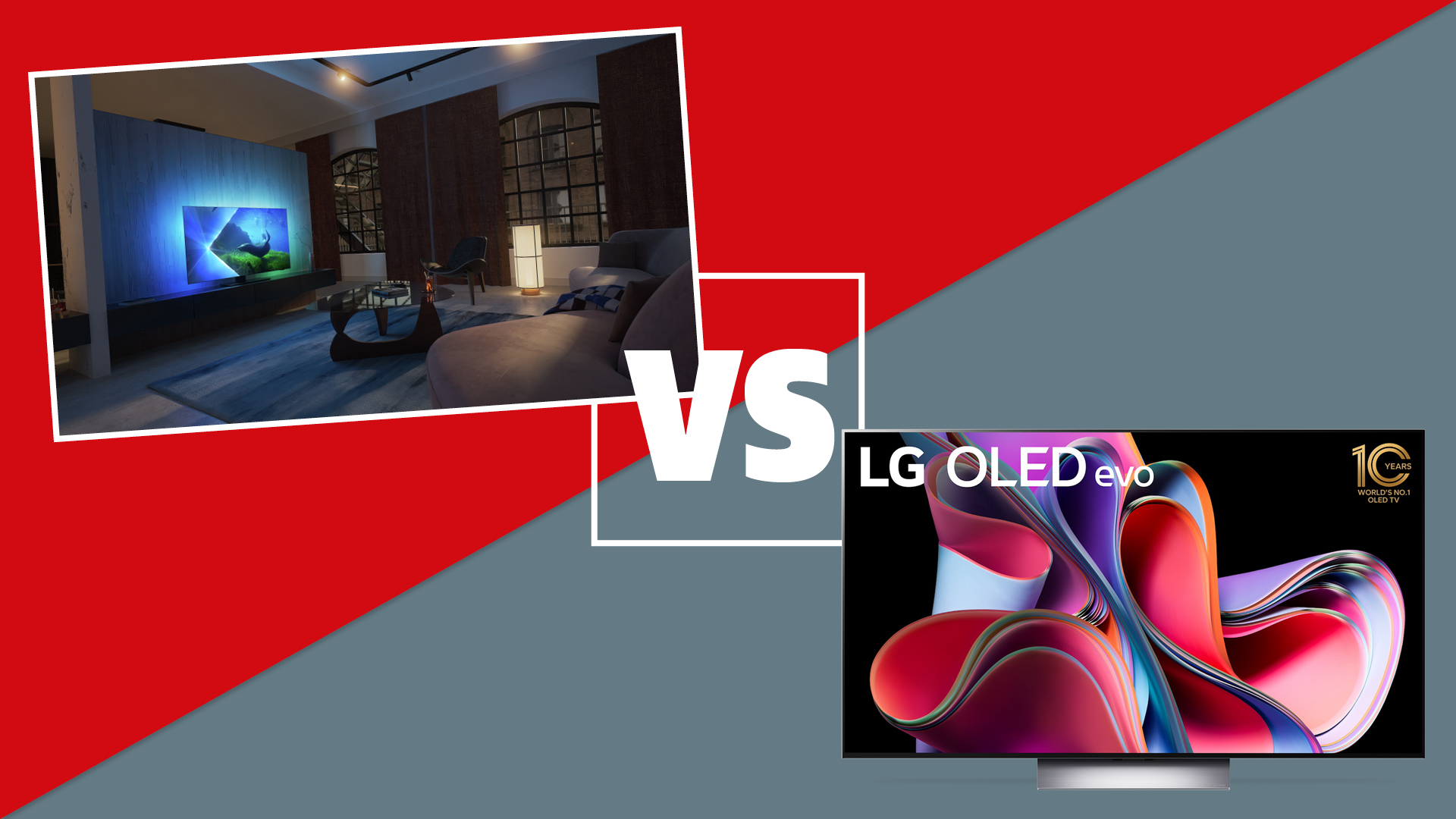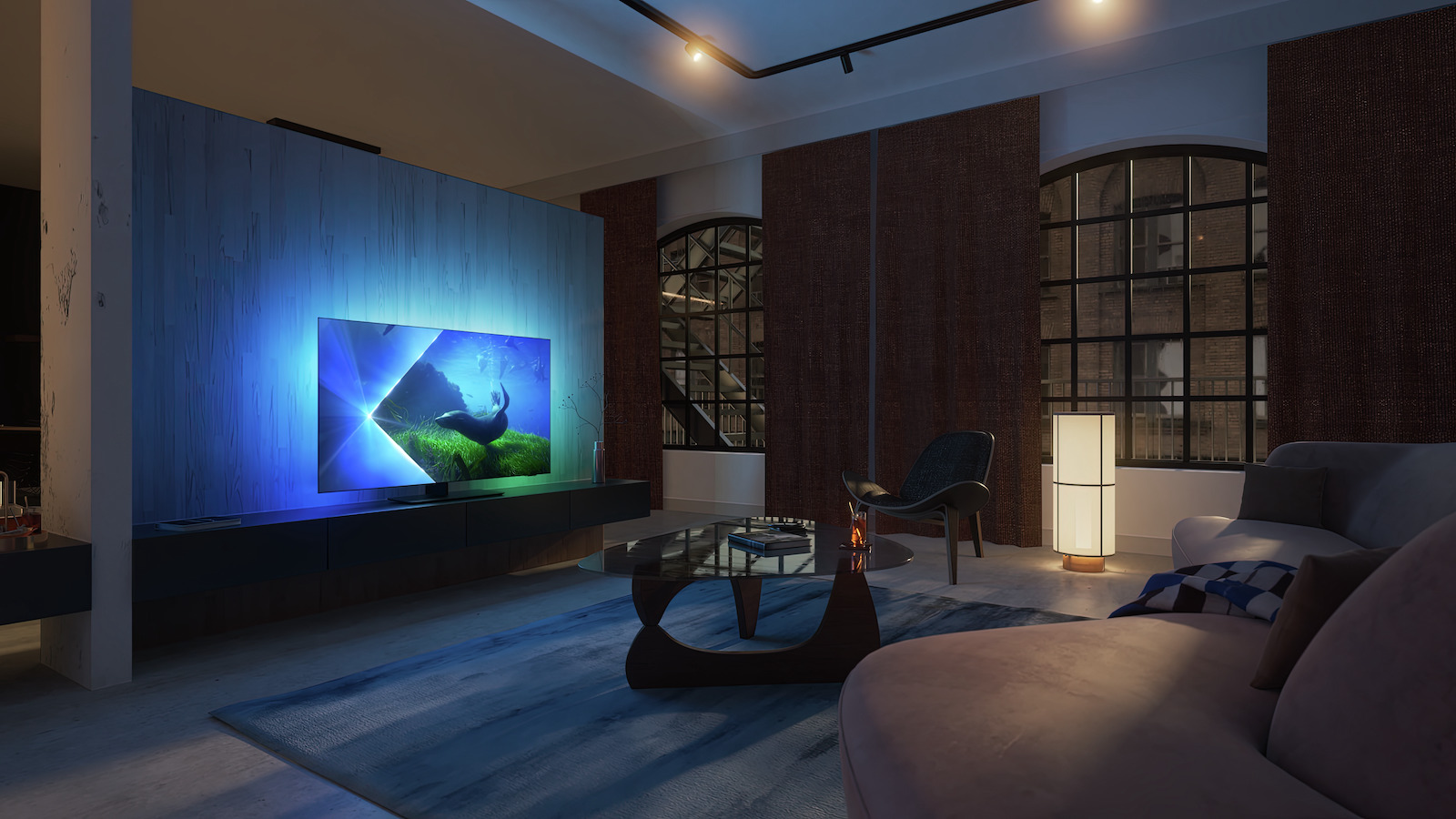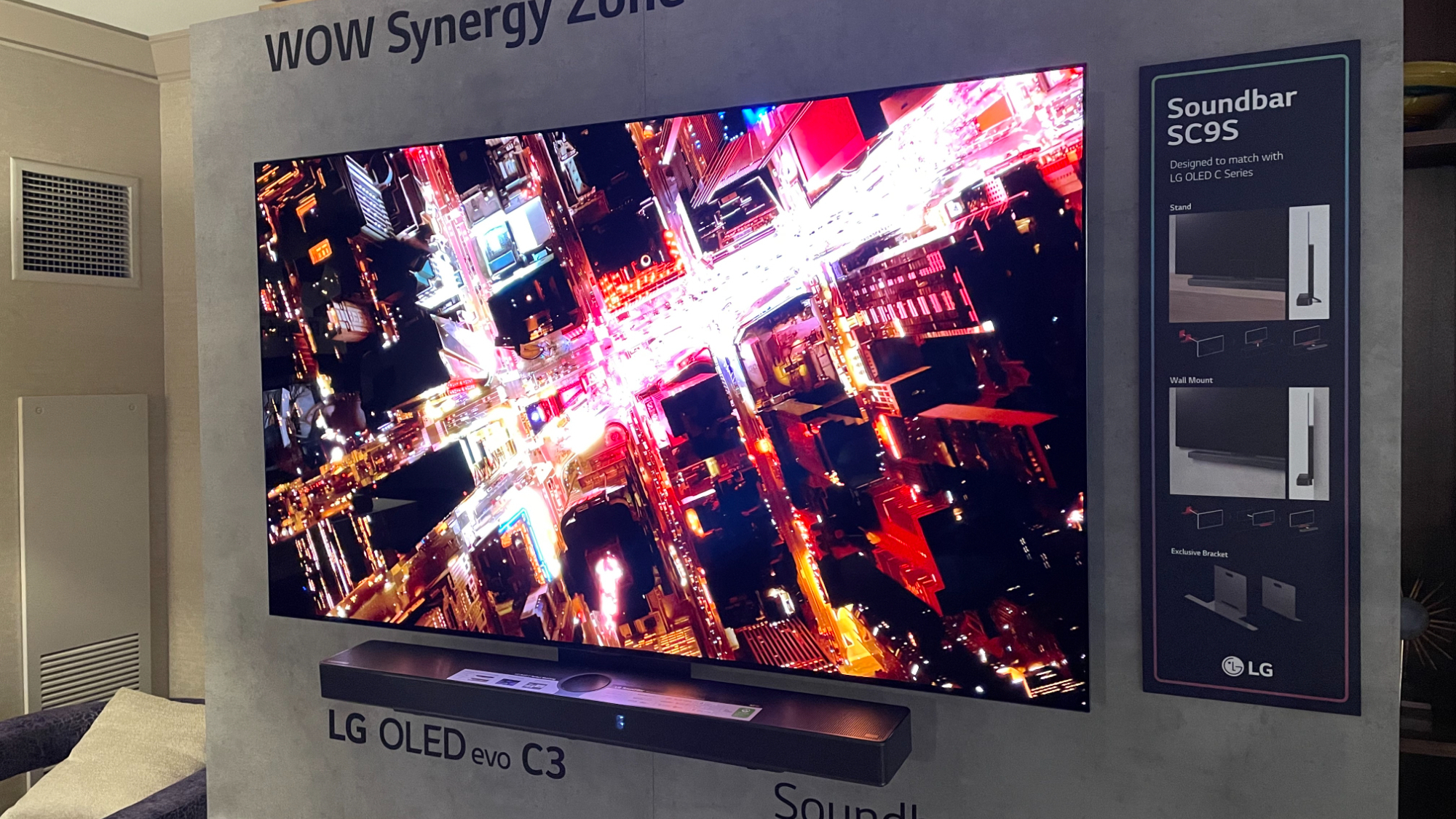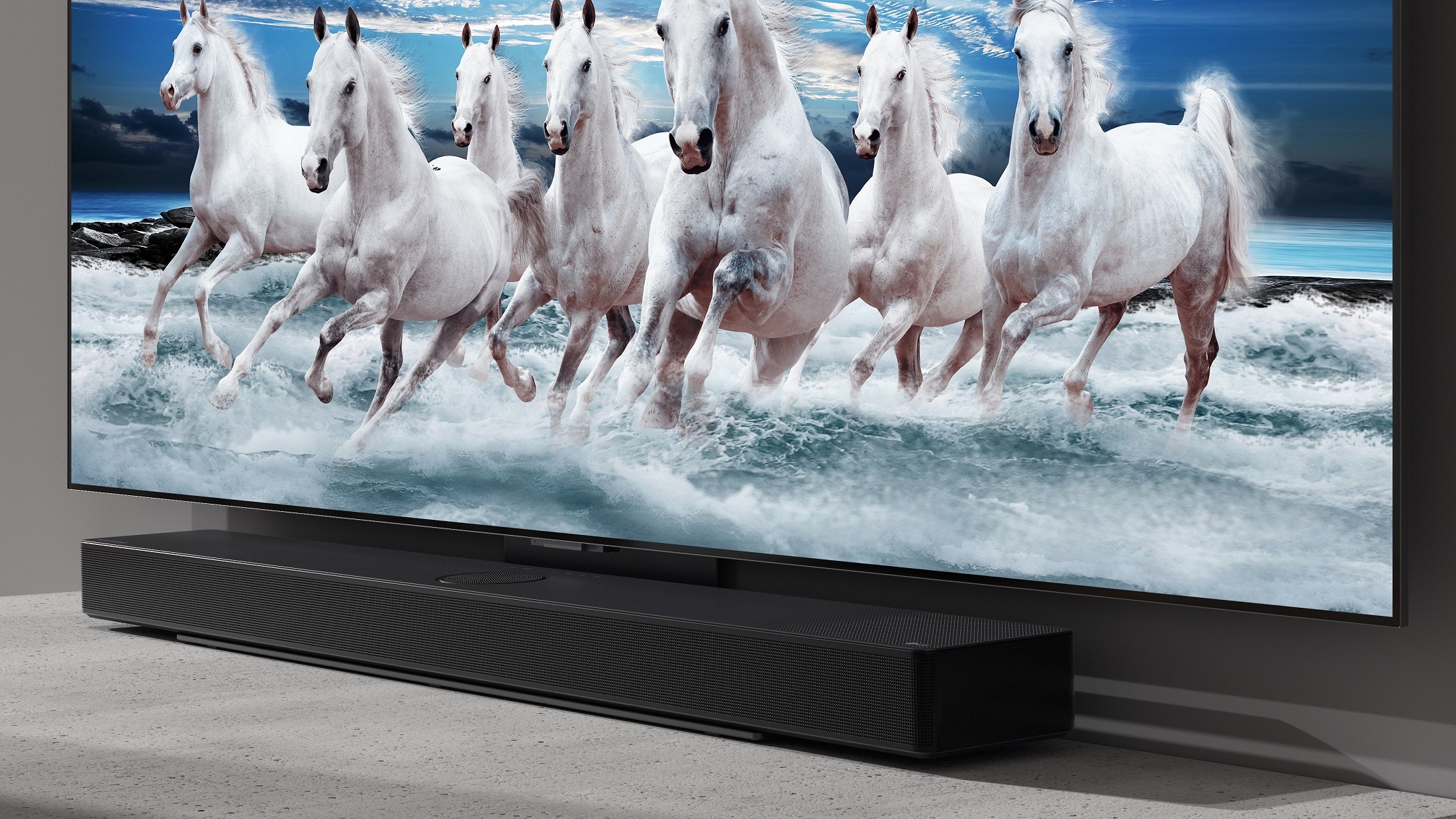Philips OLED808 vs LG C3: which OLED TV will come out on top?
Philips and LG do battle for OLED TV supremacy once more

Philips has unveiled its full 2023 TV line-up, which includes a host of new OLED, Mini LED and LCD models. Sitting just below the top of the range OLED908 is the step-down OLED808 – a TV that aims to deliver near-flagship performance and features at a more accessible price. In a first for Philips, the OLED808 will also be available as a 42-inch variant.
If all of that sounds very familiar, it's probably because the OLED808 is very much following the template of LG's C-series OLEDs, which will this year be represented by the C3. Without a doubt, these are two TVs targeting the same audience.
We haven't had the Philips in for a full review yet, but we can draw on our extensive testing of last year's Philips OLED807 to help inform a comparison. The LG C3 OLED has passed through our test lab, and in a shocking twist, we awarded it four stars due to the lack of new features and performance upgrades paired with a higher price tag; could this be Philip's opportunity to take the upper hand?
Philips OLED808 vs LG C3 OLED: pricing

Out of the two brands, only LG has revealed the pricing of its latest OLED TV. The C3 is, unfortunately, a fair bit pricier than its predecessor, find the breakdown below:
LG C3 launch pricing:
- LG OLED42C3: £1500 / $1400 / AU$2595
- LG OLED48C3: £1600 / $1500 / AU$2895
- LG OLED55C3: £2100 / $1900 / AU$3295
- LG OLED65C3: £2900 / $2600 / AU$4295
- LG OLED77C3: £4000 / $3600 / AU$6795
- LG OLED83C3: £6500 / $5300 / AU$8995
While Philips traditionally priced its 800-series models below LG's C-series alternatives, that wasn't the case in 2022. The 48-inch Philips OLED807, for example, launched at £1499 (around $1800 / AU$2600), while the 48-inch C2 started life at £1399 / $1500 / AU$3599.
With the trend of increased pricing continuing, we wouldn't be surprised to see this occur again with the Philips 808, which is even more unfortunate now that we know the C3 is a pricier TV compared to its predecessor.
It's also worth mentioning that while LG's TVs always launch globally, most Philips models, including the OLEDs, are exclusive to the UK and Europe. We don't expect that to change in 2023.
The OLED807 has been less aggressively discounted than previous models, too, but the C2 has had lots of drops in price, making it the more affordable TV throughout its life. While its still too early to see decent discounts on the C3, we hope to see the same price drops through its product cycle as the C2. Until then, you can find the best pricing for the LG C3, C2 and Philips OLED807 below:
Philips OLED808 vs LG C3 OLED: build

Philips and LG's approaches to their 2023 OLED designs differ here, with Philips updating the look of its TV, whereas LG has taken a more "if it ain't broke" approach. Philips's front-mounted soundbar and small rear supporting leg seem to have been ditched in favour of a simple cylindrical plinth atop a flat rectangular supporting base. This allows the TV to swivel, meaning positioning the TV should be easier than ever. The main body of the TV itself looks very familiar, although, from initial shots, the bezels appear to be shaved down even more from last year's model.
LG, on the other hand, has lifted the design of last year's C2 OLED, and made some under-the-hood upgrades, leaving the design almost entirely unchanged. The big news for both of these TVs is that they come in a 42-inch option, for those wanting a "compact" TV arrangement, or perhaps for use in a desktop gaming setup. LG provided a 42-inch model with the C2, but Philips is adding this screen size to its OLED roster for the first time.
Fans of smaller TVs can rejoice, as these high-spec OLEDs are coming in smaller screen sizes by the year, so you're truly spoiled for choice. The Philips also comes in 48-, 55-, 65- and 77-inch configurations, while the LG C3 comes in 48-, 55-, 65, 77- and 83-inch models.
Last but certainly not least, the remote controls: keeping it simple, LG looks like it's keeping its scroll wheel and motion sensor-equipped remote from last year, while Philips is bundling a remote with a built-in rechargeable battery (via USB-C) and backlit buttons that light up when the remote senses motion – very fancy.
Philips OLED808 vs LG C3 OLED: features and gaming

The Philips OLED808 uses the new MediaTek Pentonic 1000 chip, which was poised to make a pretty significant update in the HDMI department when it was announced in November of last year. It was expected to feature four HDMI 2.1 sockets with support for all of the latest gaming specs, but it now transpires that it has just two of these, with the others being lower-spec HDMI 2.0 ports. The icing on the not-so-great cake is that one of these HDMI 2.1 ports is dedicated to eARC, so if you want to hook a soundbar up for uncompressed sound via HDMI, you'll only have one top-notch socket spare for a PS5, Xbox Series X or gaming PC.
The LG C3, on the other hand, is coming in hot with four HDMI 2.1 connections as standard. In fact, LG's been offering this full quota of full-fat HDMI ports on its C-series TVs for years now. That means you'll be able to hook up as many HDMI 2.1-equipped goodies as your heart desires. Well, up to a maximum of four. This makes the LG C3 an obvious choice for hardcore gamers with multiple machines.
That's not to say the OLED808 is a slouch when it comes to gaming, as it does at least offer support for every next-gen gaming spec, including 4K/120Hz with Dolby Vision – a feature previously exclusive to LG's TVs. VRR comes in the standard, G-Sync and Freesync Premium varieties, and ALLM is of course also on board. Philips OLEDs also typically have an HGiG mode for more accurate HDR gaming, too, and we've no reason to believe that won't also be the case for the OLED808.
Of course, the LG C3 will support all of these features, too, and across two extra HDMI ports.
Getting onto non-gaming features, the OLED808 is making a switch in operating systems. The new model uses Google TV paired with a new user interface from Philips, which should really freshen things up when it comes to interacting with the TV. It's also using Philips' new 7th Gen P5 AI processor, which should keep daily operation snappy and hopefully bolster the feature set of this new model.
LG is also making some upgrades to its software with webOS 23, which includes a reorganised app layout and quick access to your favourite streaming services and settings. The C3 is also getting a processor upgrade in the form of the Alpha 9 Gen 6 processor, which should make navigating the OS even smoother.
There's one extra feature that LG can't compete with, and that's Philips' Ambilight system. This simple, yet effective system of LED lights reacts to what's happening on your screen, extending the picture beyond the borders in a glitzy show of lights. It comes built into the OLED808 in the 'Next Gen' form that debuted last year. This features more independently controlled LEDs around the set for more accurate expansion of the on-screen action. While this is more down to aesthetics and personal choice as to whether you want your TV to beam light out of its back and sides, we have to admit it's a pretty nifty feature.
Philips OLED808 vs LG C3 OLED: picture

While we have seen both of these TVs in action, the Philips was more of a fleeting visit while the LG C3 has undergone our review process and it yielded some interesting results. We will, of course, thoroughly test the Philips OLED808 closer to its release, but with the LG C3 scoring four stars in our review, this could be a closer competition than we first thought.
Getting the obvious out of the way, both feature OLED panels for true blacks, both feature a 4K resolution for sharp detail, and both reach refresh rates of 120Hz, which means gamers should be more than satisfied. It's also been confirmed that Micro Lens Array (MLA) will not feature on either of these TVs, leaving the brightness boosting tech to the higher-end Philips OLED908 and LG G3 OLED.
Interestingly, while both models will almost certainly use the same OLED panel – the latest-gen OLED EX from LG Display – Philips is claiming a peak brightness of 1000 nits. This would make it about 100 nits brighter than last year's C2, which LG has admitted the C3 is no brighter than. Our suspicion is that the Philips' extra brightness will be a result of the company's typically more exuberant processing and might not be obvious in more natural picture modes, but we'll be putting the theory to the test once we have the TVs in for review. The OLED808 certainly looked very bright, punchy and vibrant in our very brief hands-on session, but the C2 certainly didn't look dull when we saw it in person a few weeks earlier.
It is worth noting here that the 48-inch and 42-inch models of both TVs will be less bright than their larger counterparts, as the extra density of the OLED materials means they can't be pushed as hard.
The OLED808 also snatches up an extra HDR format over the LG C3. Both TVs support HDR10, HLG and Dolby Vision, but Philips has also included HDR10+ on the OLED808, meaning all bases are covered when it comes to watching HDR-enabled content.
On the subject of HDR, Philips is adding support for 4K/120Hz Dolby Vision gaming, previously an LG-exclusive feature. That means that the OLED808 will support all of the gaming features that the LG C2 does, however, it will only support the most advanced of these over two of its HDMI sockets, while the LG has four fully-featured ports. This should only be an issue for hardcore gamers, though.
Traditionally, Philips TVs have had punchier but arguably less natural picture presets out of the box, and have been somewhat fiddly to get the best out of, but Philips looks set to address at least part of that with a new menu system that should make picture adjustments easier to make.
As mentioned before, the LG C3 didn't quite live up to the expectations set by its predecessor, as it scored a still very respectable four stars in our review. We still appreciate its balanced and authentic picture, although we found that it didn't serve up much of an upgrade when compared to the C2. There's still plenty to like about the C3's image, including excellent dark detail and overall subtlety, but when pitted against the punchier rival Sony A80L, we felt it wasn't quite as good as we first hoped. The world of OLED TVs is more competitive than ever before, so LG needs to step up its game and not rest on the laurels of its 2022 model.
Philips OLED808 vs LG C3 OLED: sound

Sound on the Philips OLED808 is something we're yet to test, so this section will be based on information from the manufacturer. We know that the OLED808 won't be getting the same 80W Bowers & Wilkins sound system as the more premium OLED908. Instead, it'll be getting a Philips-tuned speaker system. That'll be 70W on most models, with the 42-inch being the outlier with a 50W system instead. Philips hasn't shared much in the way of additional sound features, apart from eARC support.
LG, on the other hand, has kept its C3 speaker arrangement practically identical to the C2, with a few software-based upgrades thrown in. This includes the WOW Orchestra feature that combines the TV speakers with a compatible 2023 LG soundbar, allowing them to work harmoniously to supposedly create a more detailed sound, as well as boost louder sound effects like explosions. LG has also added processing of incoming sound signals to virtual 9.1.2 – up from last year's 7.1.2. In practice, the C3 doesn't sound very good, in fact we described it as dull and limp-sounding much like its more expensive LG G3 OLED counterpart. The AI Sound Pro mode does make it sound more energetic, but in turn, it adds a layer of harshness to the sound, while the Dolby Atmos setting does improve spaciousness with the tradeoff of rattly distortion.
Combining the specs with previous experience suggests that the Philips OLED808 should provide a bigger, weightier sound than the LG C3, but we'll of course fully test the sound when we have the latter in for review. The bar is already fairly low with the LG C3, so Philips could easily take the edge here.
Philips OLED808 vs LG C3 OLED: early verdict
While it's too early to tell which of these TVs will truly come out on top, we can certainly agree that on paper, these are two enticing-looking upper-mid-range OLED sets. Out of the two, the Philips appears to build more upon its prior iteration, with a slightly updated design and new software, whereas LG has refined the already spectacular C2.
However, it looks like in that revision, it has lost some of the magic that was present with the C2 and we believe that the OLED808 could prove a worthy competitor to the C3 now that we have spent more time with the LG.
Hardcore gamers will likely already be gravitating towards the C3 due to its abundance of HDMI 2.1 sockets and the gaming pedigree it's inherited from the C2, but those interested in movie watching may find it trickier to pick between the two options.
We will, of course, put the Philips OLED808 through its paces in our full review, and you can expect a definitive verdict as to which one is the better TV shortly after, so stay tuned for updates.
MORE:
Read our full review of the Philips 48OLED807
As well as our LG C3 OLED review
Take a look at our list of the best TVs: brilliant budget to premium 4K Ultra HD
Get the What Hi-Fi? Newsletter
The latest hi-fi, home cinema and tech news, reviews, buying advice and deals, direct to your inbox.
Lewis Empson is a Senior Staff Writer on What Hi-Fi?. He was previously Gaming and Digital editor for Cardiff University's 'Quench Magazine', Lewis graduated in 2021 and has since worked on a selection of lifestyle magazines and regional newspapers. Outside of work, he enjoys gaming, gigs and regular cinema trips.
